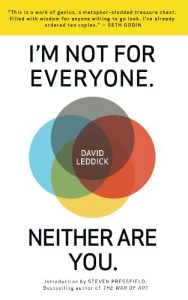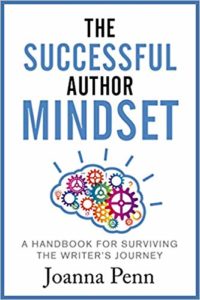by Victoria Prooday
I am an occupational therapist with years of experience working with children, parents, and teachers. I completely agree with this teacher’s message that our children are getting worse and worse in many aspects. I hear the same consistent message from every teacher I meet. Clearly, throughout my time as an Occupational Therapist, I have seen and continue to see a decline in kids’ social, emotional, and academic functioning, as well as a sharp increase in learning disabilities and other diagnoses.
As we know, the brain is malleable. Through environment, we can make the brain “stronger” or make it “weaker”. I truly believe that, despite all our greatest intentions, we unfortunately remold our children’s brains in the wrong direction. Here is why:
1. Technology
Using technology as a “Free babysitting service” is, in fact, not free at all. The payment is waiting for you just around the corner. We pay with our kids’ nervous systems, with their attention, and with their ability for delayed gratification. Compared to virtual reality, everyday life is boring.
When kids come to the classroom, they are exposed to human voices and adequate visual stimulation as opposed to being bombarded with the graphic explosions and special effects that they are used to seeing on the screens. After hours of virtual reality, processing information in a classroom becomes increasingly challenging for our kids because their brains are getting used to the high levels of stimulation that video games provide.
The inability to process lower levels of stimulation leaves kids vulnerable to academic challenges. Technology also disconnects us emotionally from our children and our families.
Parental emotional availability is the main nutrient for a child’s brain. Unfortunately, we are gradually depriving our children of that nutrient.
2. Kids Get Everything The Moment They Want It
“I am Hungry!!” “In a sec I will stop at the drive thru” “I am Thirsty!” “Here is a vending machine.” “I am bored!” “Use my phone!”
The ability to delay gratification is one of the key factors for future success. We have the best intentions – to make our children happy – but unfortunately, we make them happy at the moment but miserable in the long term.
To be able to delay gratification means to be able to function under stress. Our children are gradually becoming less equipped to deal with even minor stressors, which eventually become huge obstacles to their success in life.
The inability to delay gratification is often seen in classrooms, malls, restaurants, and toy stores the moment the child hears “No” because parents have taught their child’s brain to get what it wants right away.
3. Kids Rule The World
“My son doesn’t like vegetables.” “She doesn’t like going to bed early.” “He doesn’t like to eat breakfast.” “She doesn’t like toys, but she is very good at her iPad” “He doesn’t want to get dressed on his own.” “She is too lazy to eat on her own.”
This is what I hear from parents all the time. Since when do children dictate to us how to parent them? If we leave it all up to them, all they are going to do is eat macaroni and cheese and bagels with cream cheese, watch TV, play on their tablets, and never go to bed.
What good are we doing them by giving them what they WANT when we know that it is not GOOD for them? Without proper nutrition and a good night’s sleep, our kids come to school irritable, anxious, and inattentive. In addition, we send them the wrong message.
They learn they can do what they want and not do what they don’t want. The concept of “need to do” is absent. Unfortunately, in order to achieve our goals in our lives, we have to do what’s necessary, which may not always be what we want to do. For example, if a child wants to be an A student, he needs to study hard. If he wants to be a successful soccer player, he needs to practice every day. Our children know very well what they want, but have a very hard time doing what is necessary to achieve that goal. This results in unattainable goals and leaves the kids disappointed.
4. Endless Fun
We have created an artificial fun world for our children. There are no dull moments. The moment it becomes quiet, we run to entertain them again, because otherwise, we feel that we are not doing our parenting duty.
We live in two separate worlds. They have their “fun“ world, and we have our “work” world. Why aren’t children helping us in the kitchen or with laundry? Why don’t they tidy up their toys?
This is basic monotonous work that trains the brain to be workable and function under “boredom,” which is the same “muscle” that is required to be eventually teachable at school. When they come to school and it is time for handwriting their answer is “I can’t. It is too hard. Too boring.” Why? Because the workable “muscle” is not getting trained through endless fun.
It gets trained through work.
5. Limited Social Interaction
We are all busy, so we give our kids digital gadgets and make them “busy” too. Kids used to play outside, where, in unstructured natural environments, they learned and practiced their social skills.
Unfortunately, technology replaced the outdoor time. Also, technology made the parents less available to socially interact with their kids. Obviously, our kids fall behind… the babysitting gadget is not equipped to help kids develop social skills. Most successful people have great social skills. This is the priority!
The brain is just like a muscle that is trainable and re-trainable. If you want your child to be able to bike, you teach him biking skills. If you want your child to be able to wait, you need to teach him patience. If you want your child to be able to socialize, you need to teach him social skills. The same applies to all the other skills. There is no difference!
Train the Brain
You can make a difference in your child’s life by training your child’s brain so that your child will successfully function on social, emotional, and academic levels. Here is how:
Read the Whole Article
Do you find these posts helpful and informative? Please CLICK HERE to help keep us going!
















